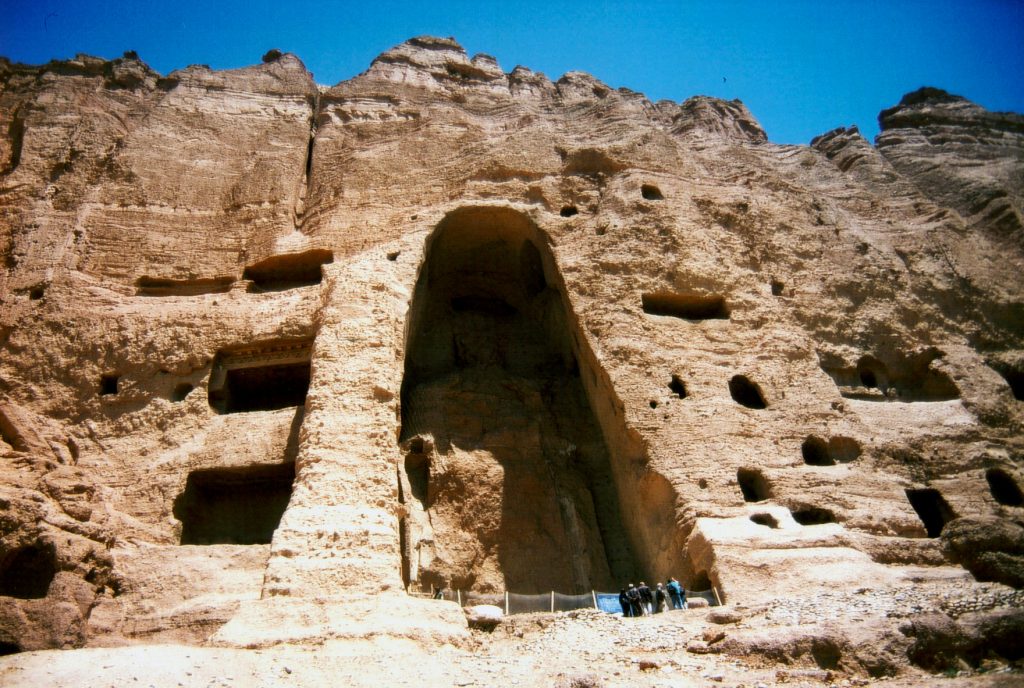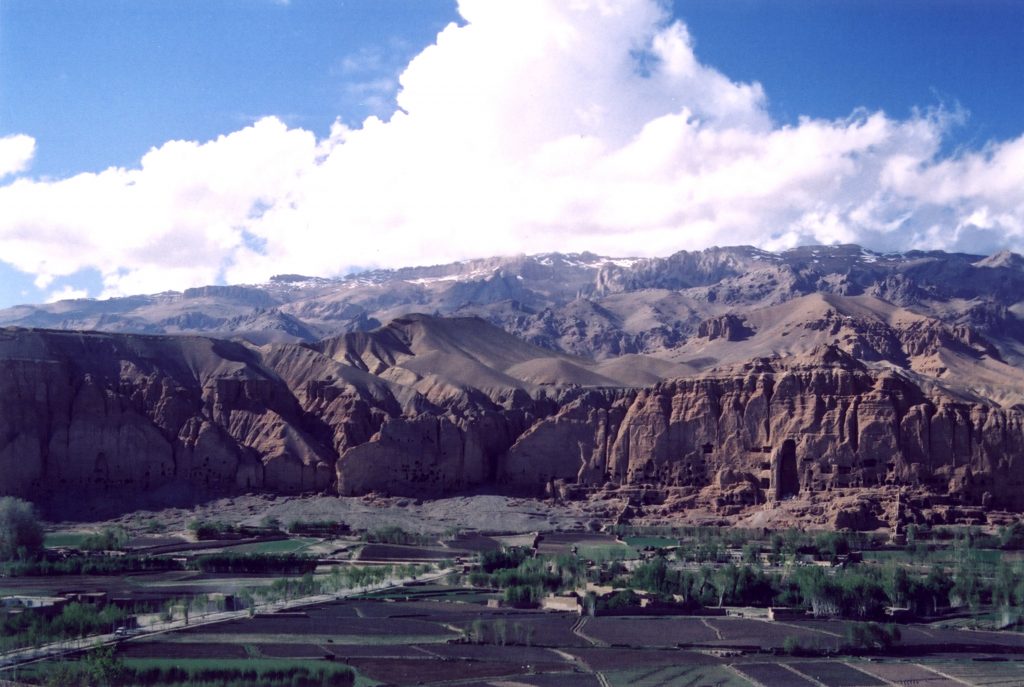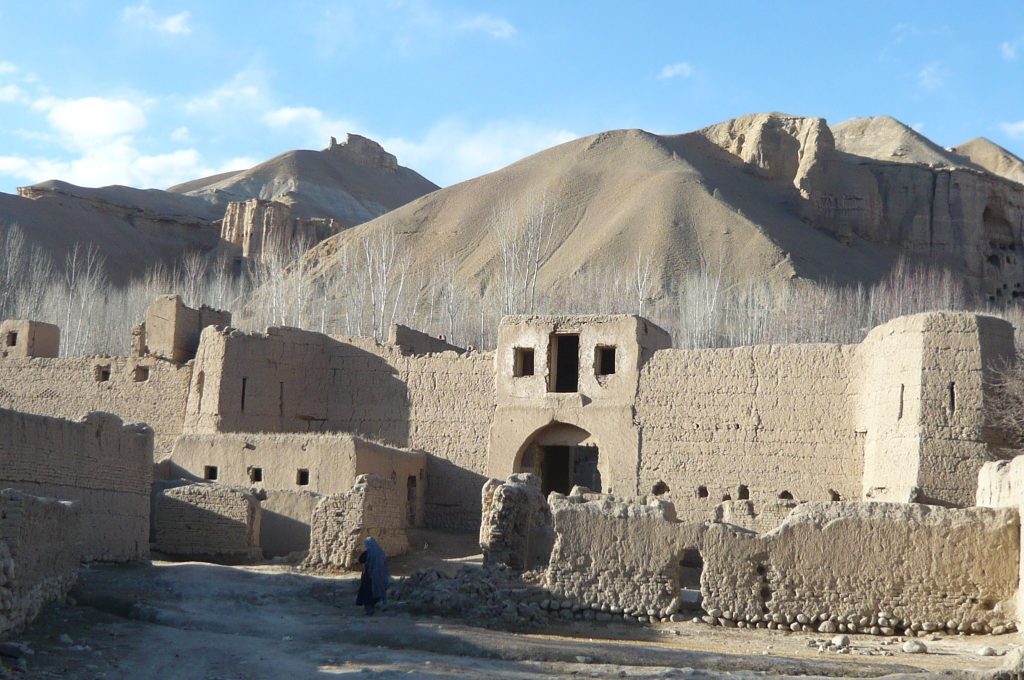Unveiling the Cultural Landscape and Archaeological Remains of the Bamiyan Valley: Nestled amidst the towering peaks of the Hindu Kush in central Afghanistan lies the Bamiyan Valley, a testament to the rich tapestry of cultural and religious history from the 1st to the 13th centuries. Designated as a UNESCO World Heritage Site in 2003, this valley encapsulates the artistic and religious fusion that characterized ancient Bactria, blending various cultural influences into the renowned Gandharan school of Buddhist art. This article explores the significance, historical context, and conservation efforts surrounding the Bamiyan Valley’s Cultural Landscape and Archaeological Remains.
Unraveling the Tapestry of Bamiyan’s Cultural Landscape
The Bamiyan Valley comprises a serial property encompassing eight distinct sites, each bearing unique archaeological treasures. At the heart of the valley stand the iconic niches of the giant Buddha statues, towering at heights of 55 meters and 38 meters, tragically destroyed by the Taliban in 2001. These niches, carved into the Bamiyan Cliffs, once housed a vast ensemble of Buddhist monasteries, chapels, and sanctuaries adorned with intricate wall paintings and seated Buddha figures dating from the 3rd to the 5th century C.E.

Exploring Architectural Marvels and Fortified Structures
Punctuating the valley basin are the remains of the Shahr-i Ghulghulah fortress, marking the original settlement of Bamiyan as a vital stop on the Silk Route. Dating back to the 6th to 10th centuries C.E., this fortress served as a testament to Bamiyan’s strategic significance in facilitating trade and cultural exchange between China and India. Further eastward lie fortification walls and settlements dating from the 6th to 8th centuries at Qallai Kaphari A and B and Shahr-i Zuhak, reflecting the evolving architectural landscape under the Islamic Ghaznavid and Ghorid dynasties.

Embracing Cultural Diversity and Artistic Expression
The Bamiyan Valley’s Cultural Landscape and Archaeological Remains embody a melting pot of cultural influences, including Indian, Hellenistic, Roman, Sasanian, and Islamic elements. This convergence of diverse traditions fostered the development of the Gandharan school of Buddhist art, characterized by its distinctive blend of styles and motifs. The valley’s Buddhist monastic ensembles and fortified structures are tangible reminders of the vibrant cultural exchanges that shaped the region’s identity over centuries.
Safeguarding Heritage in the Face of Adversity
Despite its UNESCO recognition, the Bamiyan Valley faces numerous challenges, including natural disasters, vandalism, and political instability. The deliberate destruction of the Buddha statues in 2001 dealt a severe blow to the valley’s integrity and sparked global outrage. However, efforts to safeguard and preserve its cultural heritage persist, guided by a commitment to conservation and community engagement.

Charting a Path Forward: Conservation and Management
The protection and management of the Bamiyan Valley require collaborative efforts between governmental agencies, local communities, and international organizations. The Ministry of Information and Culture oversees the administration of the site, supported by dedicated guards and police units tasked with safeguarding against vandalism and looting. UNESCO leads initiatives to consolidate the Buddha niches, preserve surviving artifacts, and undertake complex de-mining operations to ensure visitor safety.
Towards a Sustainable Future
As the Bamiyan Valley navigates its journey towards restoration and revitalization, stakeholders are committed to implementing a comprehensive management plan. This plan encompasses conservation, exploration, and sustainable tourism initiatives to preserve the valley’s heritage while fostering socio-economic development in the region. Through collective action and unwavering dedication, the Bamiyan Valley will continue to shine as a beacon of cultural resilience and global significance.
Conclusion: Preserving the Legacy of Bamiyan’s Cultural Heritage
In conclusion, the Cultural Landscape and Archaeological Remains of the Bamiyan Valley are a testament to the enduring spirit of human creativity and resilience. Despite facing formidable challenges, this UNESCO World Heritage Site remains a symbol of cultural diversity and artistic expression. By embracing conservation efforts and fostering community engagement, we can ensure that the legacy of Bamiyan’s cultural heritage continues to inspire and enrich future generations. Let us unite in our commitment to safeguarding this invaluable treasure for the benefit of all humanity.
FAQs about the Cultural Landscape and Archaeological Remains of the Bamiyan Valley
What is the significance of the Bamiyan Valley?
The Bamiyan Valley represents ancient Bactria’s artistic and religious developments from the 1st to the 13th centuries. It is renowned for integrating various cultural influences into the Gandhara school of Buddhist art. It serves as a testimony to the interchange of Indian, Hellenistic, Roman, Sasanian, and Islamic influences.
What are the main archaeological sites within the Bamiyan Valley?
The Bamiyan Valley comprises eight separate sites, including the niches of the giant Buddha statues, Buddhist monastic ensembles, fortified structures from the Islamic period, and archaeological remains dating from the 3rd to the 13th centuries C.E.
What led to the destruction of the Buddha statues in 2001?
The Taliban’s deliberate destruction of the two standing Buddha statues in March 2001 shocked the world and resulted in a significant loss to the cultural heritage of the Bamiyan Valley. The destruction was condemned internationally and underscored the vulnerability of iconic cultural monuments to ideological extremism.
How do the Bamiyan Valley’s attributes reflect its Outstanding Universal Value?
Despite the destruction of the Buddha statues, a significant proportion of the valley’s attributes that express its Outstanding Universal Value remain intact. These include Buddhist and Islamic architectural forms, traditional land use, and the landscape’s setting, highlighting its enduring cultural significance.
What measures are being taken to protect and manage the Bamiyan Valley?
The State of Afghanistan owns the monuments and archaeological remains in the Bamiyan Valley. The Ministry of Information and Culture, relevant departments, and provincial authorities manage its management. UNESCO has led efforts to safeguard the property through a three-phase plan focusing on consolidation, artifact preservation, de-mining operations, and preparing a comprehensive management plan.
What are the current challenges facing the conservation of the Bamiyan Valley?
The Bamiyan Valley faces various challenges, including security risks, structural stability concerns, conservation of archaeological remains and mural paintings, and implementation of sustainable tourism initiatives. Efforts are underway to address these challenges but continued support from the international community is essential to successfully preserving this cultural heritage site.
Is the Bamiyan Valley ready to be removed from the List of World Heritage in Danger?
Afghan officials and international experts have expressed optimism regarding the potential removal of the Bamiyan Valley from the List of World Heritage in Danger by 2013. Continued progress in addressing security risks, structural stability, conservation efforts, and implementing the management plan are crucial factors in determining its readiness for removal.
How can individuals contribute to the preservation of the Bamiyan Valley?
Individuals can support the preservation of the Bamiyan Valley by raising awareness about its cultural significance, advocating for international support and funding, and promoting responsible tourism practices that respect the site’s heritage and environment. By fostering global solidarity, we can ensure the long-term safeguarding of this iconic cultural landscape for future generations to appreciate and cherish.






